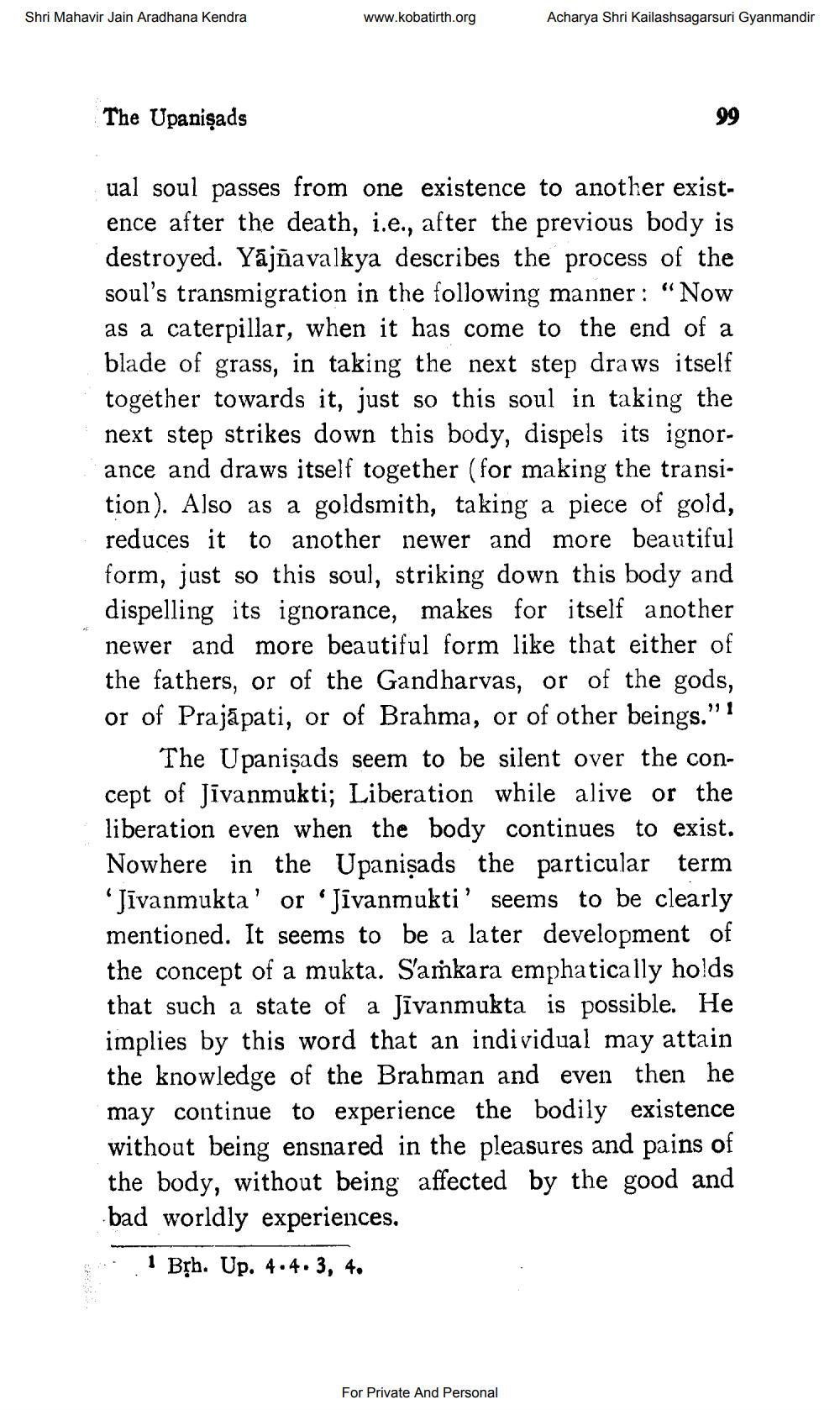________________
Shri Mahavir Jain Aradhana Kendra
www.kobatirth.org
Acharya Shri Kailashsagarsuri Gyanmandir
The Upanisads
ual soul passes from one existence to another existence after the death, i.e., after the previous body is destroyed. Yajnavalkya describes the process of the soul's transmigration in the following manner: "Now as a caterpillar, when it has come to the end of a blade of grass, in taking the next step draws itself together towards it, just so this soul in taking the next step strikes down this body, dispels its ignorance and draws itself together (for making the transition). Also as a goldsmith, taking a piece of gold, reduces it to another newer and more beautiful form, just so this soul, striking down this body and dispelling its ignorance, makes for itself another newer and more beautiful form like that either of the fathers, or of the Gandharvas, or of the gods, or of Prajapati, or of Brahma, or of other beings."
11 1
For Private And Personal
99
The Upanisads seem to be silent over the concept of Jivanmukti; Liberation while alive or the liberation even when the body continues to exist. Nowhere in the Upanisads the particular term 'Jīvanmukta' or 'Jivanmukti' seems to be clearly mentioned. It seems to be a later development of the concept of a mukta. S'amkara emphatically holds that such a state of a Jīvanmukta is possible. He implies by this word that an individual may attain the knowledge of the Brahman and even then he may continue to experience the bodily existence without being ensnared in the pleasures and pains of the body, without being affected by the good and bad worldly experiences.
1 Brh. Up. 4.4.3, 4.




